Soryo Fuyumi
This time, we go behind the scenes of manga creation with Soryo Fuyumi as she takes on the historical epic Cesare. Join us as we discover the secrets of her art and "unthinkable" techniques.
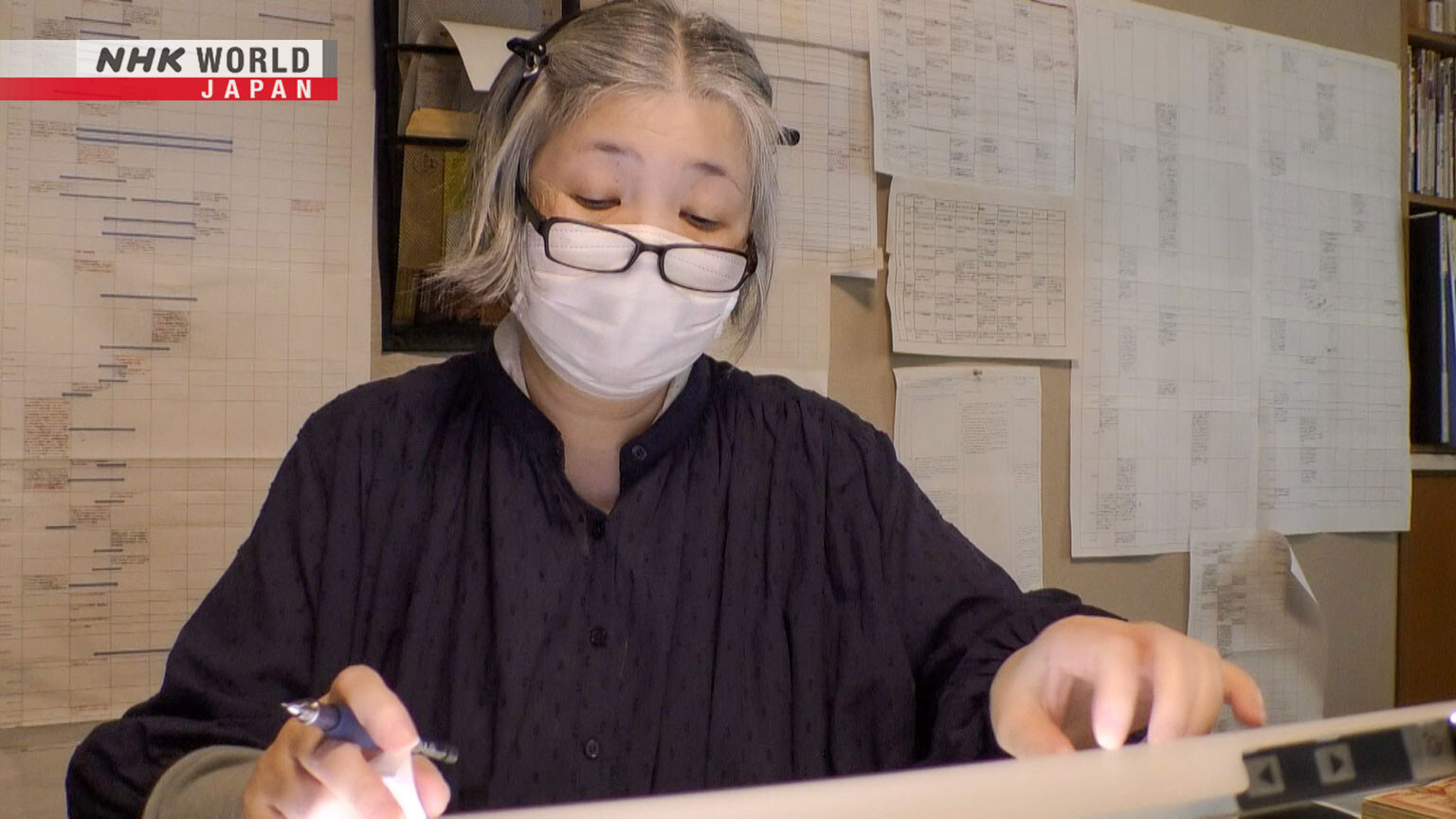
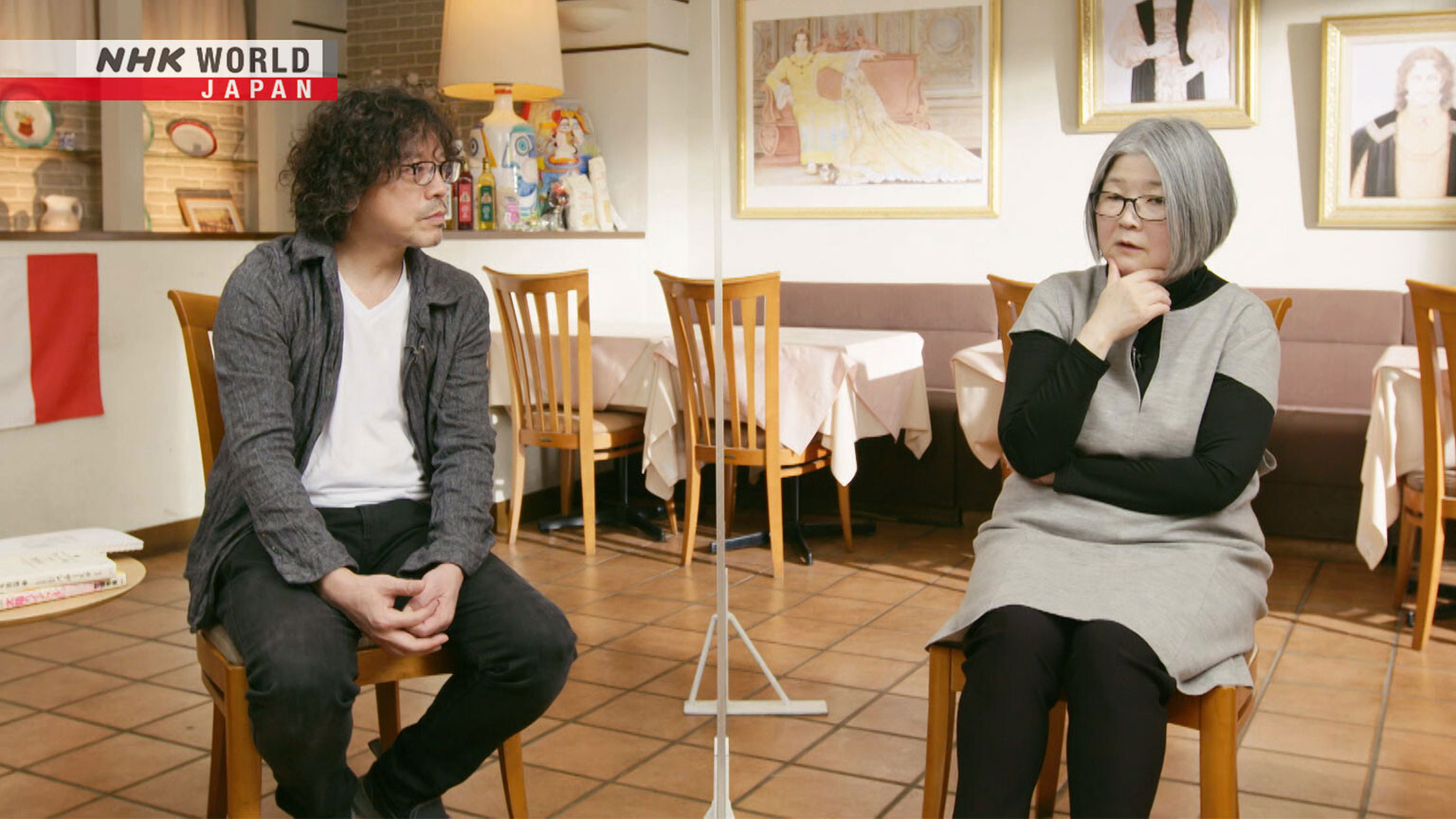
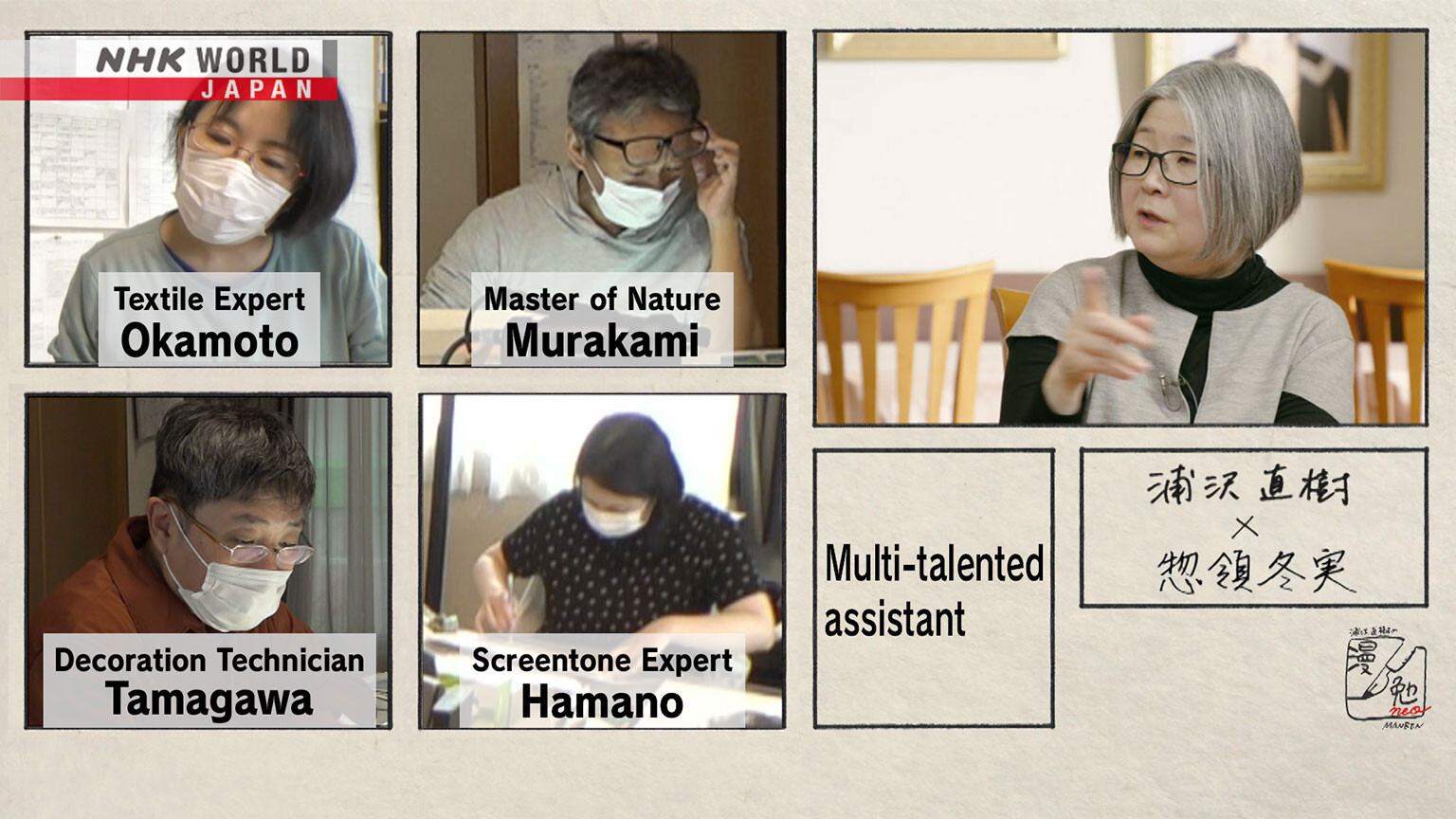
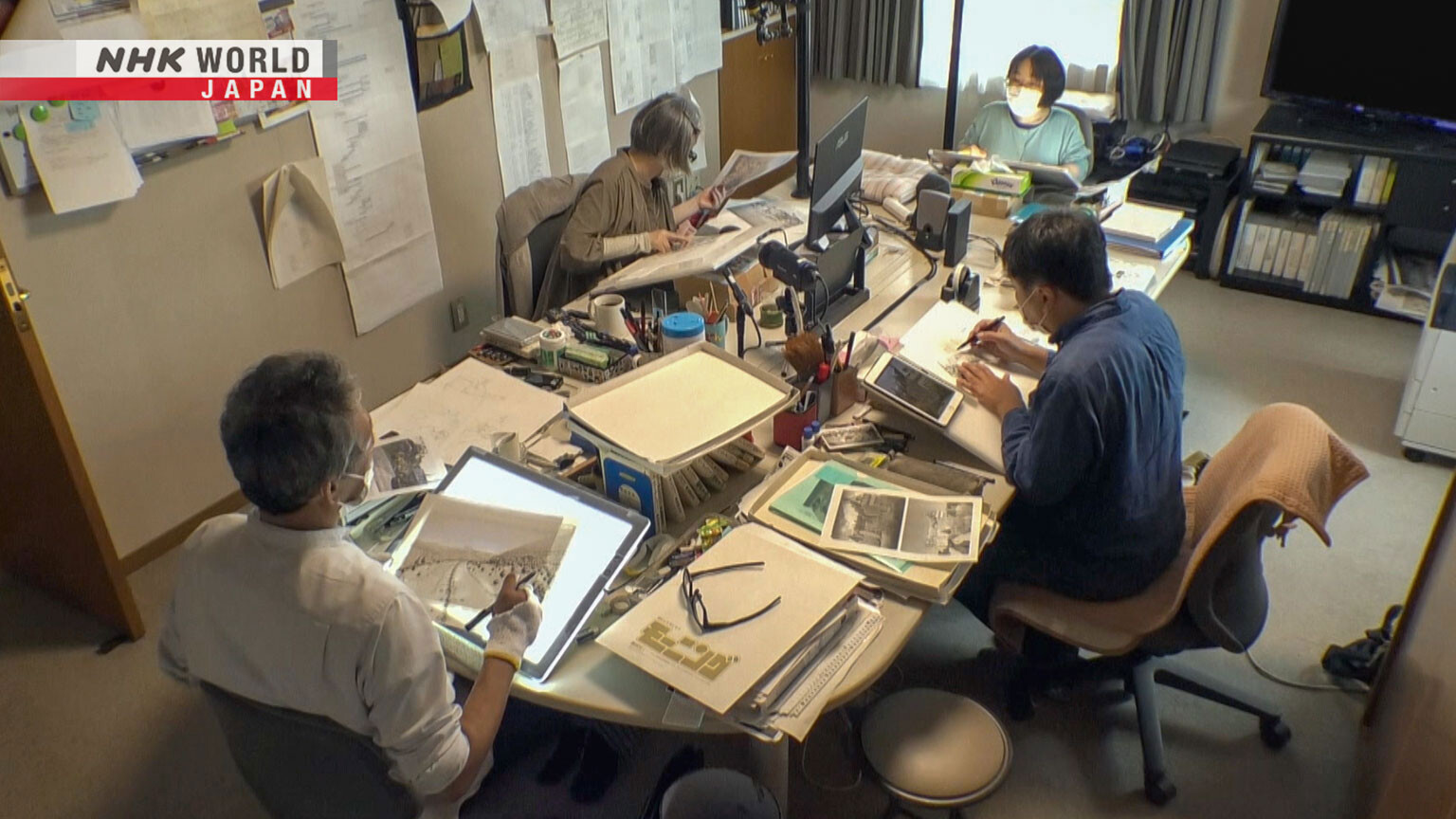
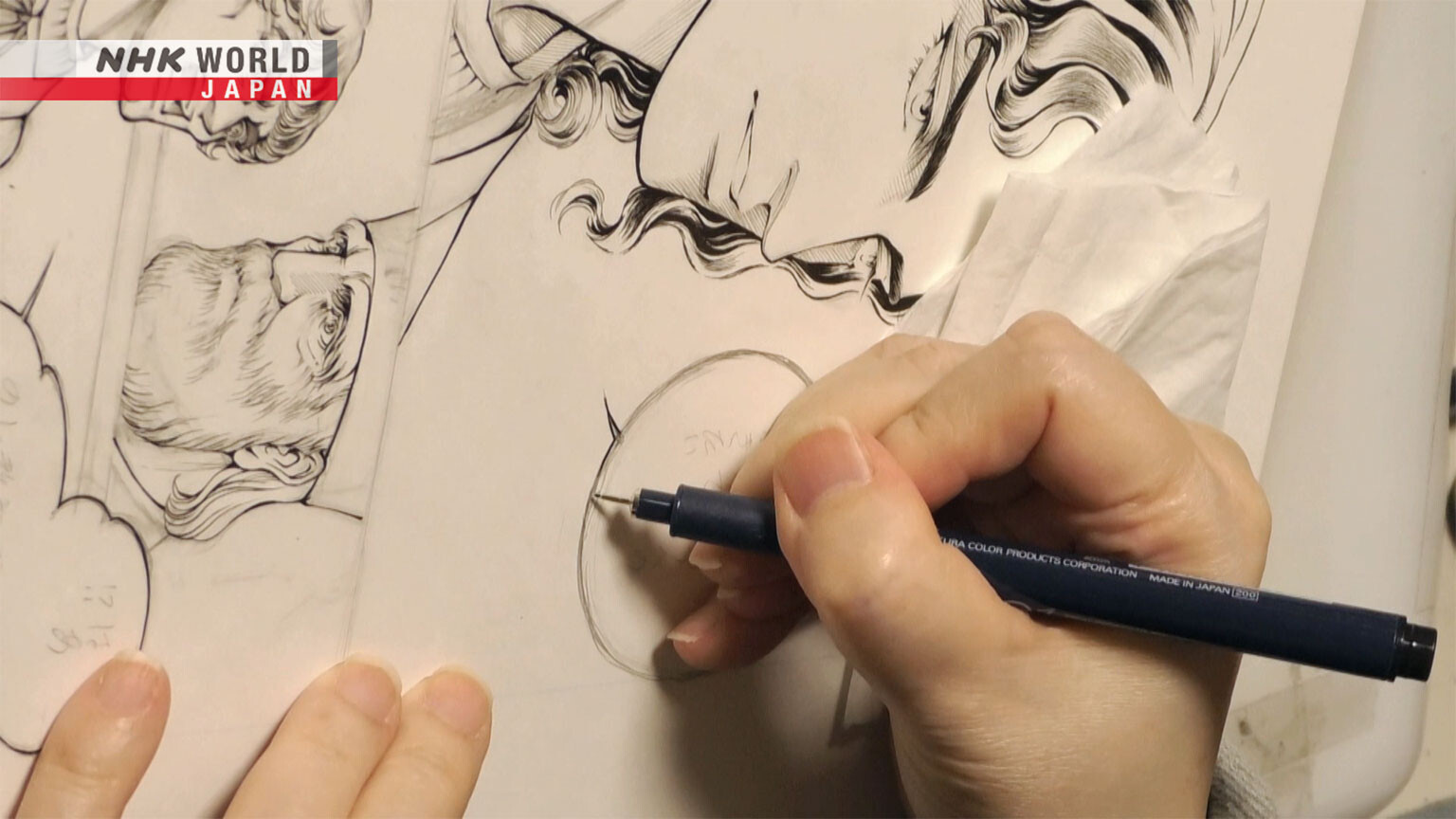
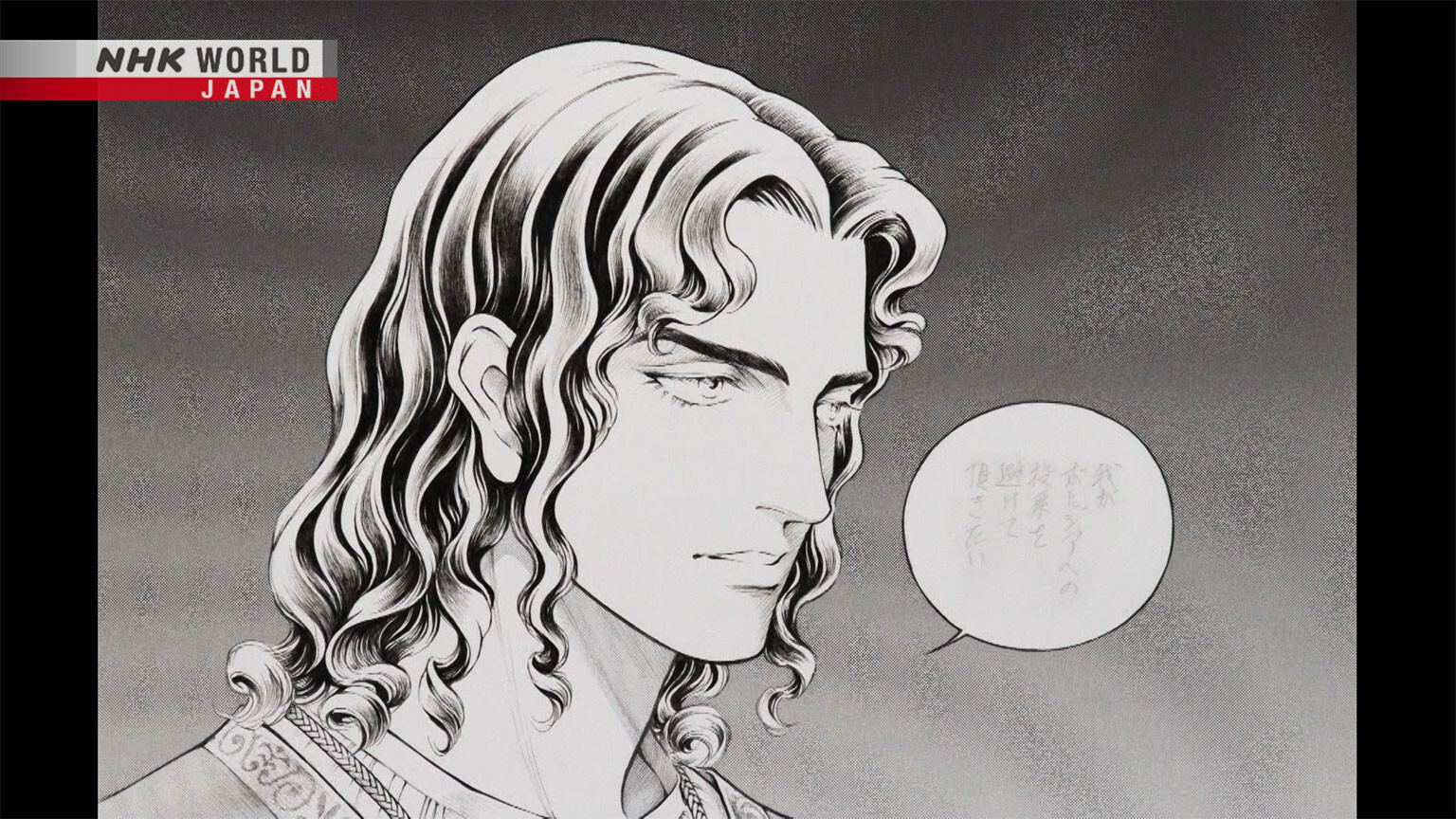
Transcript
There is no goal in art.
We must set our own goals.
Some people set goals far in the distance,
and others place goals five meters ahead.
The ones who take the long path are like disciplined manga practitioners.
Manga - where drama is created with just the tip of a pen.
In this program, we take you behind the scenes of where manga is made and explore the craft.
The idea came from Urasawa Naoki.
The famous manga artist has released hits in a variety of genres.
Our guest this time is a manga artist known for her commitment to beautiful art.
Soryo Fuyumi has been at the forefront of the manga world for nearly 40 years.
She made her debut with shojo manga and released numerous hits in the genre.
However, in the 2000s, Soryo shifted her focus to manga for young men and began an epic work based on history.
Meticulously built from historical documents, her work gained the respect of scholars.
She's also received high acclaim from countries like Italy and France.
Soryo now spends her days pouring everything she has into creation.
I've been living in seclusion. I'm a hermit.
I read and watch things all day.
In one year, I went to the market twice and vet once.
That's it. Just three days outside.
Our conversation takes place in Soryo's neighborhood.
Urasawa has long had his eye on Soryo's work.
We are almost the same age and debuted around the same time.
I've always felt a connection since we've lived through the same era.
But in the 21st century, she really changed things up.
I'm interested to hear her thoughts about manga after all these years.
- I'm Urasawa.
- Thank you for coming all this way.
It's our first time to meet, right?
- I've always wanted to meet.
- I'm honored to hear that.
Isn't it rare for you to be outside?
It is! Only about three times a year.
- Well, thank you for coming out!
- Don't worry about it.
The two sat down for a discussion at an Italian restaurant Soryo used to frequent.
Without further ado, let's learn about Soryo Fuyumi's secrets!
- It's a great walking course.
- I have a lot of friends nearby.
Really?
So this is how we looked!
One big table?
Yes. So we can all face one another.
We discreetly placed four cameras to watch Soryo's team work.
Their current project is-
-Cesare.
The long-form historical manga was in publication for over 15 years.
Its serialization ended in November 2021, after this interview.
The main character is Cesare Borgia, an Italian nobleman who lived during the Renaissance 500 years ago.
He was the beautiful and intelligent heir to the prestigious Borgia family.
However, he did whatever it took to achieve his goals and quickly became infamous across Europe.
Referencing historical documents from the era, Soryo drew Cesare in an appealing way that went against conventional knowledge.
We spent four days watching Soryo work on the manga.
The artist doesn't use any storyboards, known as "ne-mu" in Japanese.
She goes straight to the rough draft.
The face of the hero Cesare.
With a fine mechanical pencil, Soryo begins with his hair.
Next, the outline of the face, with narrow lines in search of the best look.
Soryo uses 0.3 mm lead.
To ensure accurate inking, she spends as much time as possible on creating a complete rough draft.
In this scene, 17-year-old Cesare confronts the 86-year-old cardinal.
Cesare's a very strange character.
Going by conventional wisdom,
he's incredibly evil.
But as I researched,
I found out he was quite popular.
Maybe there was some media manipulation?
They say the winners define history.
The expression is really coming together.
And she erased it! What went wrong?
A 17-year-old must persuade
an old and experienced cardinal.
It's politics.
He's older and of higher status.
In this moment,
a young man becomes a politician.
The game of intrigue begins.
The eyes must express that.
Exactly.
The moment a 17-year-old becomes a politician...
The expression holds great importance.
The final check of the rough draft.
From behind.
Yes. In the final check.
I make sure everything is lined up,
like the shoulders and neck.
It's a very detailed draft!
I feel an intricate rough draft
makes the inking process much easier.
A beautiful image.
It took over 90 minutes to complete this panel's rough draft.
Next up, inking.
With a 0.05 mm pen, Soryo outlines the face.
She doesn't use g pens or mapping pens.
For this panel, Soryo uses three fineliner pens.
I noticed you use different 0.05 mm pens.
Yes. Pens wear out and ink stops flowing.
- Separated by ink flow?
- Yes, exactly.
I tape them and separate them by color.
Soryo separates her pens by the degree of ink fade.
Three types of 0.05 mm pens.
For face outlines, Soryo uses a pen with a low degree of fade.
The same pen is used for clothing outlines.
Next, eyebrows.
Then, the bridge of the nose.
Delicate strokes, one by one.
Soryo began using fineliner pens because she was never comfortable with dip pens.
I asked if I could use fineliner pens
but the editor said no. The lines would be lifeless.
- Without any drawing experience.
- Exactly.
So I asked, "How are you so sure about that?"
He answered, "Tezuka said so."
I thought, "Ah, the God of Manga."
But my lines were messy to begin with,
and a pen wasn't changing that.
I might as well go all into the messiness.
I used fineliner pens in secret.
- And I kept using them.
- He never noticed!
Even after three months, no reaction.
So I finally asked, "Notice anything?"
The editor was clueless. I said I used fineliner pens.
- Nicely done.
- He asked which parts.
I answered, "All of it." He was speechless.
He said it looked just like last episode.
I told him I used them for three months.
- He was quiet after that.
- Great job.
They didn't comment on my art after.
You should be able to use tools you're comfortable with.
It's all about results.
If it fits the artist and worldview,
it doesn't matter what you use.
Next up?
The ears and hair, with a thicker 0.1 mm pen.
You draw with short instead of long lines.
I don't pull lines. I create them.
I'm composing and constructing lines
to look tailored for the work.
Layering lines with fineliner pens adds slightly different levels of thickness.
Soryo traces over the rough draft with high precision.
The character's expression gradually comes to life.
Soryo once again changes pens.
For the eyes, she uses a 0.05 mm pen with a high degree of fade.
You create multiple blotches of ink.
Yes. I repeat the same bouncy style.
This technique feels quite innovative.
- Is that so?
- Yes.
Implementing different drawing techniques for different pens leads to enthralling imagery.
Such delicate work.
Subtle wrinkles in the clothes...
And the lips.
Mouths are hard.
Yes. Lips are difficult.
Being 1 mm off completely changes it.
But thinking of Tezuka's "Black Jack,"
I remember lines for the mouth
that looked like they were trembling.
Those small details really decide the character's expression.
I didn't know that!
In my case, I make sure to differentiate
male and female lips.
I draw them in different ways.
How so?
Basically, I make female lips
look more plump compared to male lips.
Male lips are thinner.
Most times, I just use simple horizontal lines.
Different structure.
Right. Women are softer.
Lips complete facial expressions.
For the fine hair lines, Soryo uses a 0.05 mm pen with low fade.
Hair.
The most troublesome part.
For shojo manga, hair is very important.
Yes.
European hair is curled with such beauty.
Every portrait features such detailed hair.
Since they are portraits, it makes sense.
Wow...Impressive.
Soryo uses a 0.05 mm pen with high fade for subtle shadows on the face.
And then...erases them?
I saw this part already.
You did?
It's amazing.
I erase it.
This was the most shocking part.
Really?
You've shaken up the manga world.
- Is that so?
- Yes.
Let's take another look.
The lines fade.
For shadows, I draw as if using a pencil
and then erase after.
We're told not to do this.
Yup.
You draw and then erase.
Was this an accidental discovery?
I went to erase something but forgot
I was using pen instead of pencil.
I was surprised to see the ink fade.
I bet!
It only works with well-used pens.
Not with ink from new pens.
I get that.
The ink remains.
Then you erase!
You got it! Not much else to say.
And if you look closely,
the lines are broken!
The lines do seem to be dotted!
Like small dots.
When I read your standalone releases,
I used a magnifying glass!
And I found all these broken lines.
Like something Moebius would create.
It makes shadows and gradations possible.
It's useful for adding dynamic shadows to singular lines.
Soryo adds more nuance with a fine 0.03 mm pen.
Then she uses an eraser to add gradation...
When I see techniques like this,
I have a bad habit of copying them.
So, I drew this.
I thought 0.05 mm and 0.03 mm pens
would be suitable for a good-looking guy.
It came out a bit messy, though.
I used one of my own characters.
- Oh! With a fineliner pen?
- Yup.
Johan from my series "MONSTER."
Urasawa drew Johan with 0.05 mm and 0.03 mm fineliner pens.
Let's compare it to a mapping pen...
The eyes feel a bit more delicate.
The more I drew, the better it felt!
Did it?
I want to redo all of "MONSTER" like this.
It adds some delicacy to the lines.
I agree!
This is how I wanted to draw Johan!
Thicker lines make characters look strong.
These lines add fragility.
Fragile and fleeting.
I also realized I draw too fast for this.
You must stop and erase.
Draw while analyzing the image.
Drawing quickly with 0.03 mm or 0.05 mm
leads to faded lines.
Exactly.
Urasawa realized one more thing while using fineliner pens.
I now know why your drafts are so detailed.
You can't make any mistakes!
It would take way too much time to redo.
Especially the 0.03 mm pen and eraser.
Fixing mistakes with whiteout won't work!
That's right.
The lines become too thick.
So, you can't make mistakes.
No whiteout allowed.
It made the process really intense!
I get why you need perfect drafts.
The lines can't be shaky.
Perhaps the reason she stays inside all year is because the process is so demanding?
Soryo ends with the iris, using a 0.05 mm pen with high degree of fade.
Then, speech bubbles.
It looks like Soryo is using a mechanical pencil on the rough draft.
I've never seen a rough draft
with such perfect speech bubbles!
It's a bit too much, isn't it?
Why am I doing all of this?
Like checking the back of the paper.
The back of the paper?
For balance and symmetry.
Looking at it now, it's so silly!
Plus, you erase and redraw bubbles!
I've never seen this.
I didn't like the shape and position.
Soryo inks the speech bubbles with a brand new 0.1 mm pen.
You use a fineliner for speech bubbles?
Yes.
Normal pen nibs would be a lot faster.
I know, I know.
Was this always your style?
Since "Cesare."
I see.
Before, I drew vertical, fluffy bubbles.
I had to plan in advance
for Italian words to be used.
As an artist, I find it amazing
you're able to switch styles per work.
It wasn't on purpose.
It naturally changed as I went.
Each work changes your style.
Let's compare the two languages.
You can see that the Italian words beautifully fit inside the speech bubbles.
Three and a half hours later, Soryo has finished inking this panel.
After this, Cesare becomes a brilliant strategist.
This is the moment he awakens to his political destiny.
Soryo Fuyumi was born in 1959 in Oita Prefecture.
She was a skilled artist from a young age.
After attending a high school connected to a local art college-
-Soryo applied for the Tokyo National University of Fine Arts and Music, only to be rejected.
After taking time away from art, she entered a manga competition aimed at new artists.
Her first work won honorable mention.
In 1982, Soryo made her debut as a shojo manga artist.
She released a series of hit romance manga, but something continued to nag at her.
It's like I was forced to draw shojo manga.
- That wasn't your original style?
- It wasn't.
I preferred gruesome images over fluffy and cute things.
I like stories of deception.
For romance, I like to focus on the suspenseful aspects.
You have a lot of dark stories.
My editor asked, "Why do you draw like you're pouring cold water on the story?"
I was already holding back!
The editor wanted honesty, but it was too twisted.
They can expect too much.
Soryo searched for what she really wanted to draw-
-and ended up creating "MARS."
Although it depicted the darker parts of humanity, like bullying and suicide, it sold over five million copies.
The manga was later turned into a TV drama and film.
Soryo took this chance to move up to youth comics.
She says this gave her the freedom to create what she wanted.
So, where do your manga roots lie?
Well, I wasn't allowed to read manga.
But my friends shared theirs
with me.
I think my first was by Mochizuki Mikiya.
Mochizuki Mikiya! That's quite the intro.
Manga for manly men.
I borrowed "Wild 7" and "JAPASH"
from a boy I was friends with.
They were so entertaining!
Mochizuki's art looked so sexy and cool.
Everything is starting to make sense.
I love this short story.
The female characters are so masculine.
The editors didn't like that!
They thought my young female characters
were too strong for shojo manga.
They told me to make them cuter.
Strong women are seen as cool nowadays.
Yes. But back then they were unrelatable.
The trend was for female characters
to be timid and sheltered.
For me, battles in shonen manga
and shojo manga rivalries are the same.
In shonen manga,
it's about challenging strong enemies.
In shojo manga, it's a defensive campaign.
The romance is set from the start.
Then a rival appears
hoping to destroy their love.
It's a defensive battle.
Love affairs make good conflicts.
An enemy arrives to show the heroine
her boyfriend is targeted by someone else.
But the heroine's goal isn't to destroy her rival.
It's to protect her relationship.
Protection at all costs.
That still sounds a bit extreme.
Does it?
But that is a key component
for a Soryo Fuyumi dramatic work.
Yes, it's all about the battle.
Quite simple.
Now back to the creative process.
Soryo has a large collection of reference material for "Cesare."
She bought two suitcases worth of books while in Italy.
What was she researching?
Renaissance-era Italy.
Soryo creates buildings and towns that look just like they did 500 years ago.
Right now, she is drawing the streets of Naples.
Using a painting she found while in Rome, Soryo composes her ideal image.
The stairs are strange.
The height difference...
They're moving up.
I think it's something like this.
Ah.
But I don't get this part.
It must be moving down.
Looks that way.
It's going down. Like this.
That's right.
Maybe it's just not well maintained.
Soryo puts incredible thought into recreating the city.
I think it's drawing in water.
Maybe to stop enemies from attacking?
I'll ask Hara if it's a waterway or not.
This could be water flowing around.
And there's a little bump over here.
The entrance is now on the other side.
With the bridge.
Maybe it's water from the Mediterranean?
So much detail...
Everything is about lifestyle.
How people lived back then.
I try to maintain city functionality.
You want to bring the audience here.
Yes. I want to bring them in
and let them enjoy that world.
In volume two or three,
Cesare and Miguel are on a walk talking.
You drew from the front, then the back.
Then another angle on the next page!
You drew backgrounds for all three panels.
Most manga artists would draw
the second panel without a background.
I see.
It's like you want to bring readers here.
That's true. It's all just so beautiful.
The whole city is.
Once image composition is decided, Soryo's assistants finish the background.
This is the final product.
Naples from 500 years ago, recreated as faithfully as possible.
You can almost feel the sunshine and wind flow off the page.
The second panel comes after the Naples streets.
One character makes their first appearance.
Is this...a hallway?
You draw "Cesare" from a far-off view.
Right. The ceilings are really high!
And you show so much of the background.
Much more than any normal manga artist!
I agree.
But that's part of the hierarchy.
Houses represent one's rank in society.
Walking through the hallway is Sancha, Princess of the Kingdom of Naples.
She will play a pivotal role in the story.
Keeping her out of clear view heightens anticipation.
Angles are important.
Yes. Angles connect panels.
They could be from the side.
Far off or up close.
You can even introduce characters
from the bottom up.
Camera height.
I'm very particular about that.
I reference Ozu Yasujiro a lot.
Me too!
I love his camerawork.
He placed cameras on the floor.
I heard he dug holes!
Really? I didn't know.
He had far shots from low angles.
It's like everything is compressed.
At first, it looks like a still image,
but suddenly a car appears and stops,
or people cross the frame.
I love the way he composes shots.
I've studied a lot of his work.
For visuals, it's Ozu and Visconti.
Yes!
When I watch their works,
I get completely lost in the imagery.
I know!
I can't explain their stories at all!
Same.
Soryo begins inking Princess Sancha with a 0.03 mm pen with a low degree of fade.
So small.
It is.
But my focus is on the background.
The people are for proportion.
My focus was on the corridor.
Expressing the European atmosphere.
This must drive digital artists crazy!
But using digital tools to zoom in
and draw lines feels unnatural, too.
For far-off objects and faces,
it's much more natural to draw it small.
Drawing every detail is too much.
Plus, looking through the air
can make distant objects hazy.
Soryo switches to a 0.03 mm pen with a high degree of fade.
She works on tiny details like the hair and clothes.
Indeed, the figure looks to be in the distance...
Inking is complete.
Soryo leaves the background to be finished by her assistants.
Here's the final image.
The corridor is deep with a high ceiling.
The prestigious Kingdom of Naples exudes through the page.
Soryo says that her assistants are indispensable to the work of "Cesare."
I have an incredibly talented team.
Without them, I wouldn't have done this.
For example,
one assistant is good with textiles,
another with nature and stones,
another with decorative details.
And another is great with screentones.
These four...
Make up the team of "Cesare."
With ten years of experience working together,
the "Cesare" team is capable of incredible teamwork.
OK. What was Matsuda Seiko's film debut?
- "The Tomb of Wild Chrysanthemum."
- How'd you know that?
The team often quizzes each other.
But there is a reason they joke around like this.
I don't like detail work.
But there is no Renaissance without detail.
That's why we work on the dull parts
while chatting or joking around.
Honestly, I prefer T-shirts and jeans.
I always say if you are like me,
this work is like punishment.
I cut corners and took shortcuts so long,
and this is where I end up.
I said, "I want to draw the Renaissance."
I knew it would be a lot of work.
But challenging yourself is a good choice.
I thought I'd rather regret drawing too much than too little.
But here I am with so much regret!
Soryo works on important panels alone, after her assistants have left.
A close-up of Sancha, princess of the Kingdom of Naples.
This is the first time the audience gets to see Sancha.
As usual, the draft is done with great detail.
The draft already looks finalized.
Yes.
Did the process change with "Cesare?"
I didn't create drafts like this!
I usually just used simple circles.
Did the drama push you to do more?
In this era, beauty was righteousness.
Plus, Italians will read it. So much pressure!
They enjoy well-proportioned characters.
The audience influences your art?
"Cesare" is much more popular in Italy.
Readers have said they learned a lot
about Cesare and the House of Borgia.
They're unfamiliar with their history.
The fact that I'm not Italian is big.
For example, Hollywood movies about Japan,
Japanese people quickly notice mistakes.
Things like an incorrectly worn kimono.
I don't want to be like that.
I know exactly what you mean.
Soryo is always aware of the audience's perspective.
Time to ink.
Soryo uses a 0.05 mm pen for the facial outline.
She uses a pen with medium fade for the eyes.
Soryo delicately layers her lines.
She finalizes Sancha's expression by inking the lips with a 0.03 mm pen.
A specific experience made Soryo more aware of her Italian readers.
It was about five years into the serialization.
Soryo received a letter from an Italian reader.
Dear Ms. Soryo,
My name is Arianna. I am 16 years old.
Your manga is teaching Italians about their own country.
The 16-year-old girl explained
her father didn't like Japanese manga.
He viewed it as detrimental to education.
But as his daughter read "Cesare,"
he started reading, too.
"Cesare" changed his opinion of manga.
Now they both enjoy manga together.
You changed his view of manga.
I guess so.
The young girl sent me an email
just to say thank you and tell me
her father was enjoying my work, too.
As long as they were reading,
I couldn't let myself cut corners.
It must have been a lot of pressure.
You have no idea.
I see.
Is Soryo using a mechanical pencil for the layout?
The eyes.
I take time to layout the iris.
A layout just for the iris?
Yes, since eyes are round.
Wow.
Their eyes have a crystal-like beauty.
Indeed!
The iris is inked with a 0.03 mm pen.
Soryo then uses an eraser.
She carefully makes the eyes look three-dimensional.
And a few lines around the eyes to finish it up.
This panel took Soryo one hour and 40 minutes to ink.
The first appearance of 14-year-old Princess Sancha.
The image captures both the innocence of youth and a hint of devilish charm.
It is the exciting birth of a character that is sure to be key to the story.
Over "Cesare's" 16-year run, there have been a total of 13 volumes released.
How does it feel
to have such a career at your age?
Well, it is a little bit unexpected.
- Is it?
- Yes. I didn't aim to get here.
This was the only path left
after my life choices.
You embarked on a manga pilgrimage,
but didn't expect this.
And there's no turning back.
Don't you want to work on something light?
I already am.
Honestly, I love Impressionism
and want to make manga about that.
That's why I'm drawing the Renaissance.
But they're completely different?
The foundation starts there.
The Baroque era came after
the Realism movement.
Impressionists wanted to destroy academia.
So, that's where I started.
Then build it up and tear it down
Next up is tearing it all down?
That's right.
Like writing block script calligraphy.
Then destroying it.
Yes.
Great.
Soryo has a grand vision beyond "Cesare."
We have much to look forward to.
Let's both keep living.
I took this chance because I won't be doing this much longer.
It's like my will.
Let's start with exercise!
That's right.
You should get a treadmill.
A treadmill?